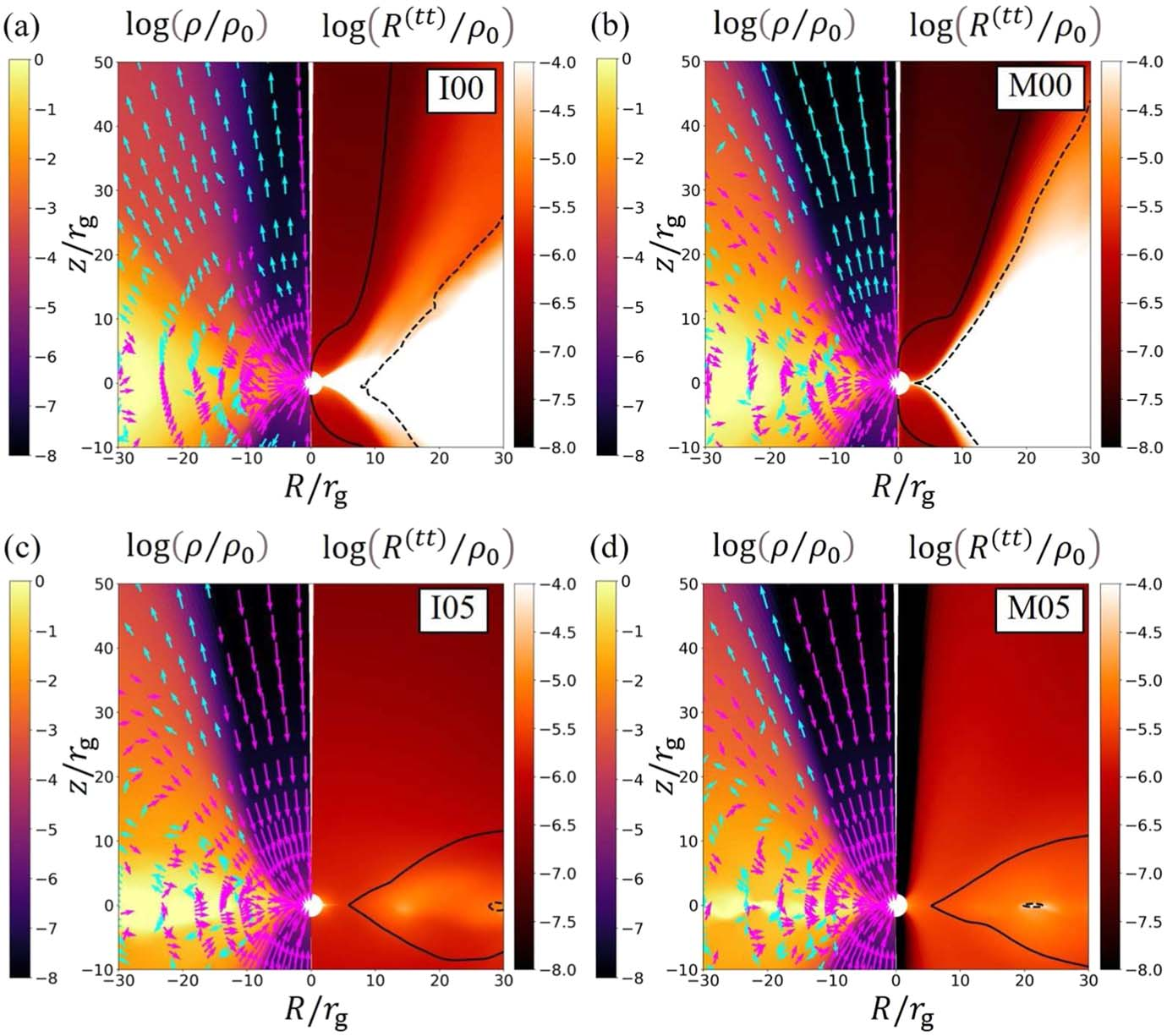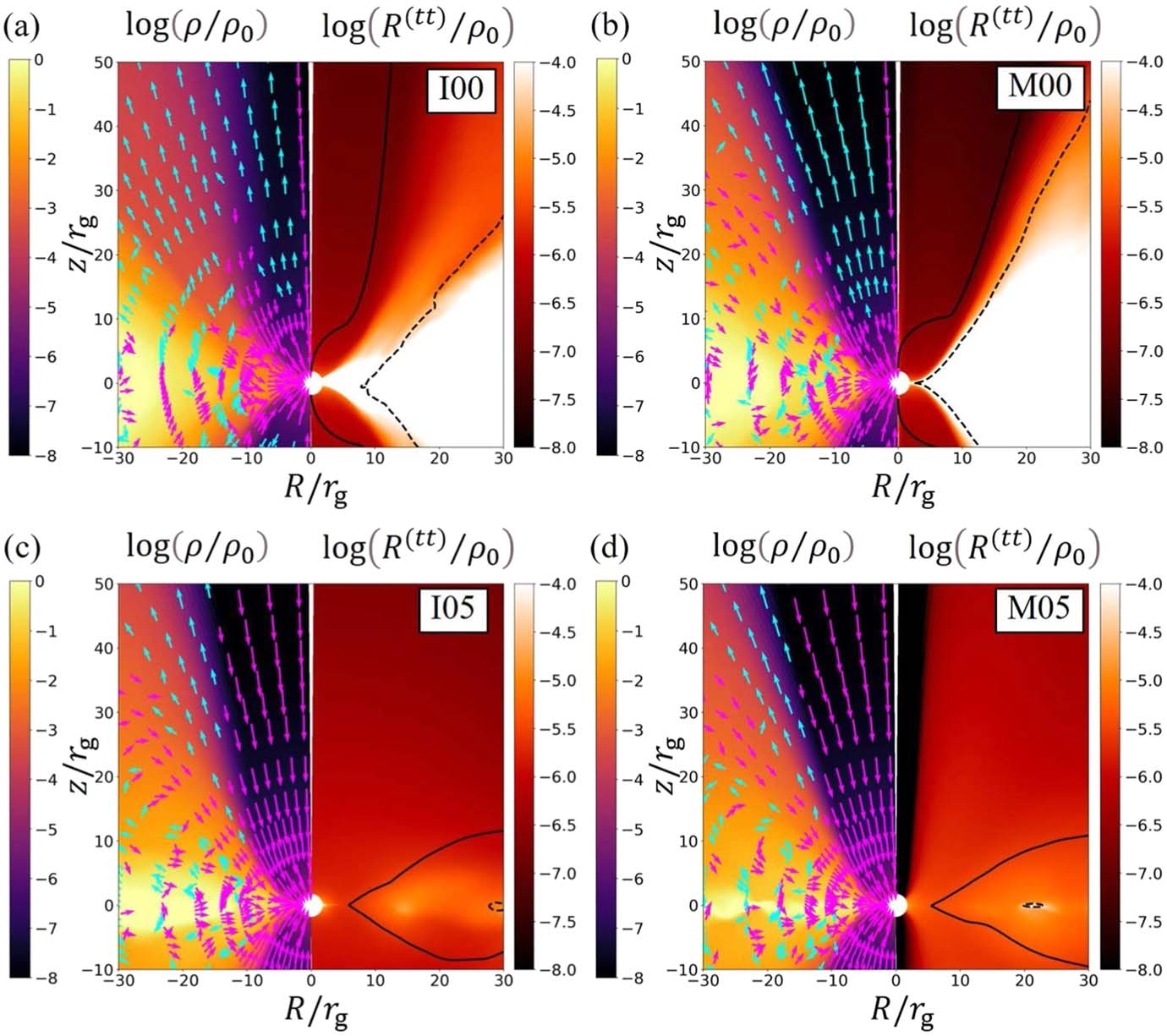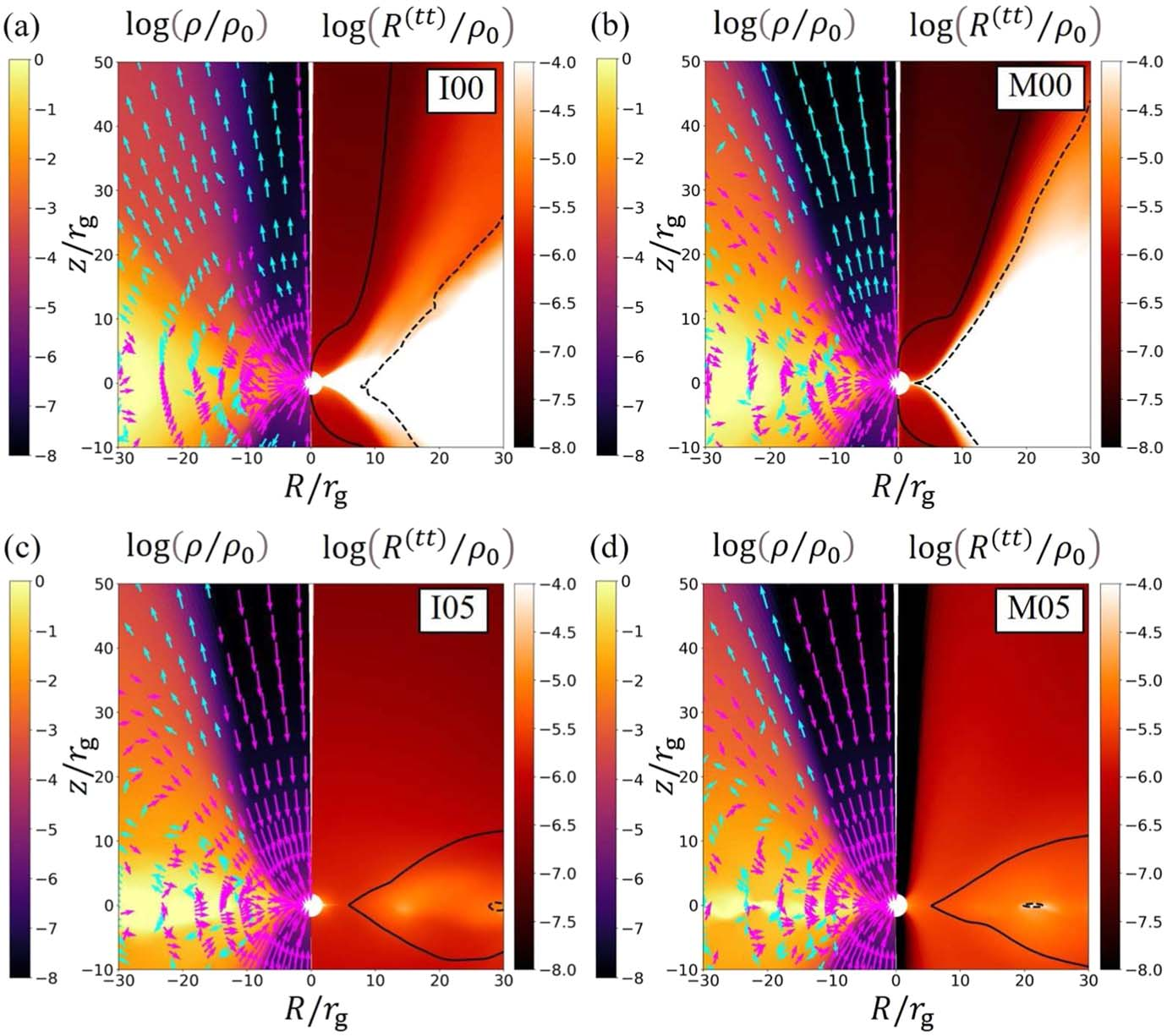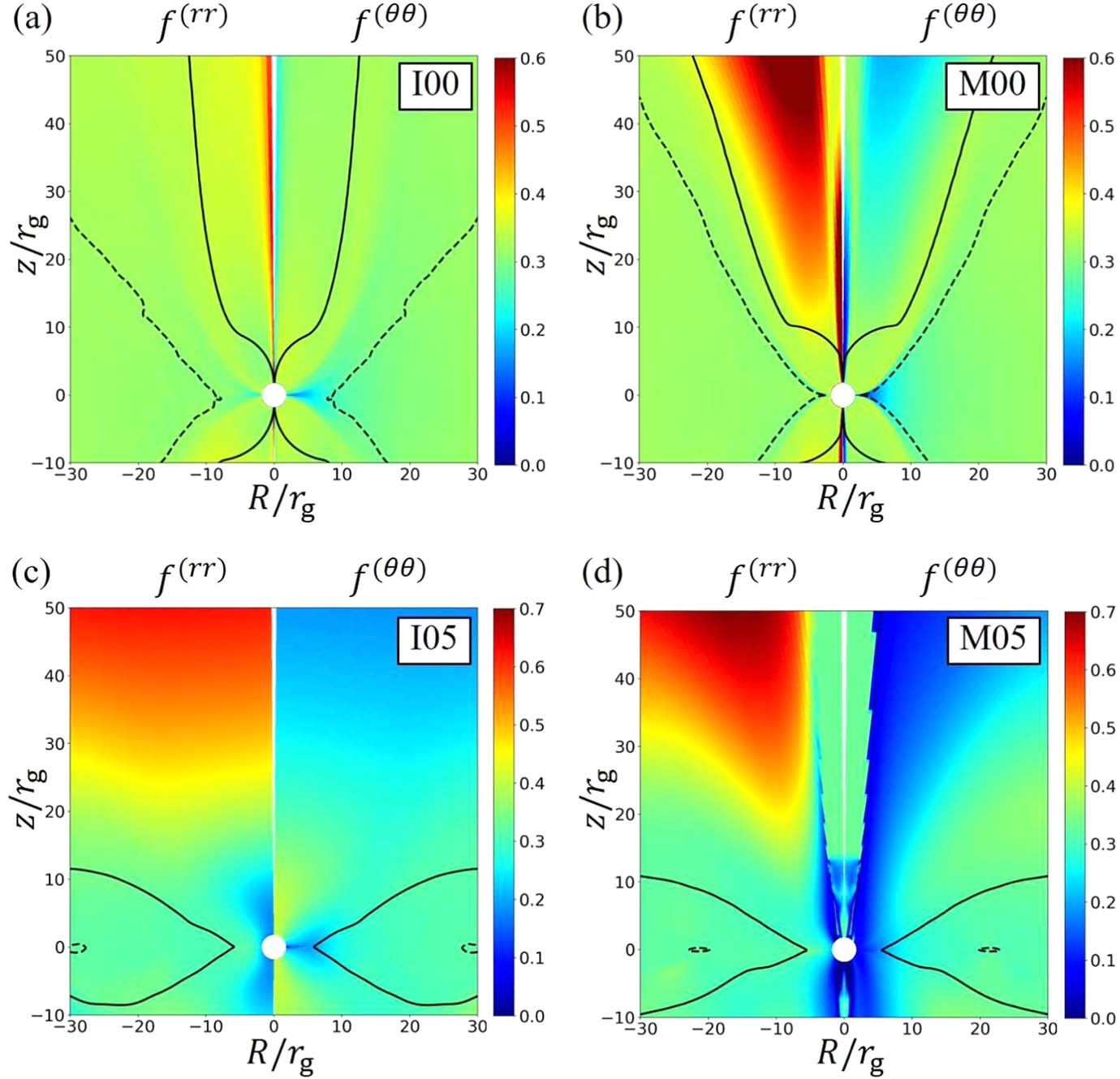Achievements & Publications
General Relativistic Radiation Magnetohydrodynamics Simulations of Black Hole Accretion Disks: Comparison of Methods Based on Variable Eddington Tensor and Based on M1 Closure
Asahina, Yuta, & Ohsuga, Ken
Abstract
simulations of black hole accretion disks and disk winds in the range of mass accretion rate from 0.1 to 104.5 times the Eddington limit. In this paper, we compare the results of the INAZUMA code, in which the frequency- integrated time-dependent radiation transfer equation is solved in order to evaluate the Eddington tensor, with those of the first momentum (M1) approximation method. In both methods, accretion disks and disk winds appear, and there is no remarkable difference in accretion rate, outflow rate, or luminosity. However, the significant difference in the radiation field appears around the rotation axis. In the M1 method, the radial component of the radiation flux tends to be amplified owing to unphysical radiation collisions. Such an enhancement of the outward radiation flux does not appear in INAZUMA. Also, the problem of radiation not reaching the rotation axis occurs with M1, but not with INAZUMA. Our results indicate that the radiation transfer equation should be solved to obtain the accurate radiation field in the optically thin region around the rotation axis.






 和 英
和 英